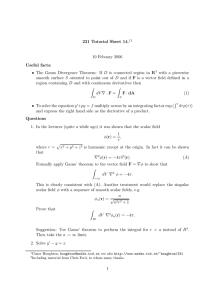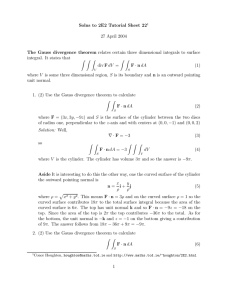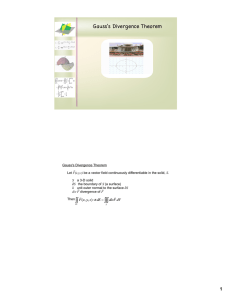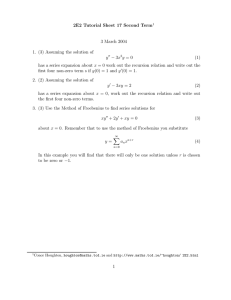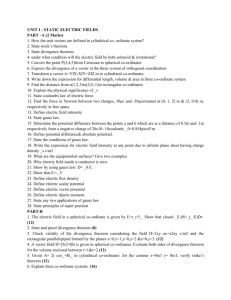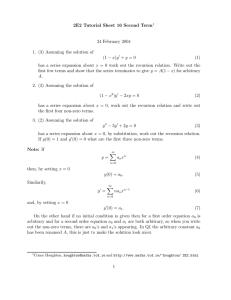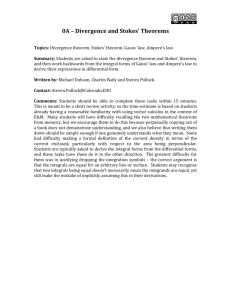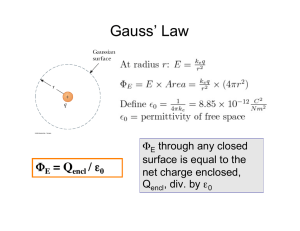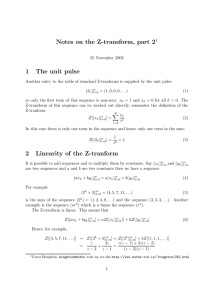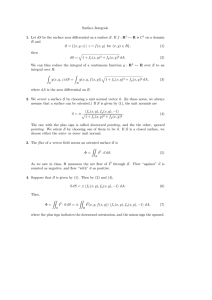2E2 Tutorial Sheet third term 22 27 April 2004
advertisement
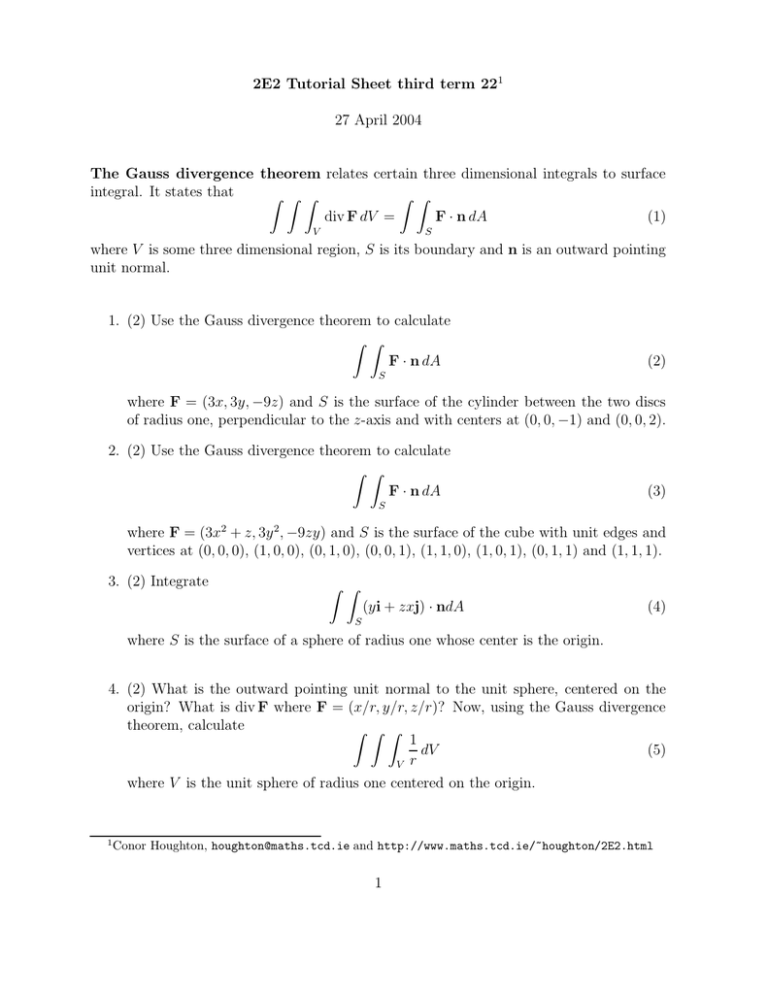
2E2 Tutorial Sheet third term 221 27 April 2004 The Gauss divergence theorem relates certain three dimensional integrals to surface integral. It states that Z Z Z Z Z div F dV = F · n dA (1) V S where V is some three dimensional region, S is its boundary and n is an outward pointing unit normal. 1. (2) Use the Gauss divergence theorem to calculate Z Z F · n dA (2) S where F = (3x, 3y, −9z) and S is the surface of the cylinder between the two discs of radius one, perpendicular to the z-axis and with centers at (0, 0, −1) and (0, 0, 2). 2. (2) Use the Gauss divergence theorem to calculate Z Z F · n dA (3) S where F = (3x2 + z, 3y 2 , −9zy) and S is the surface of the cube with unit edges and vertices at (0, 0, 0), (1, 0, 0), (0, 1, 0), (0, 0, 1), (1, 1, 0), (1, 0, 1), (0, 1, 1) and (1, 1, 1). 3. (2) Integrate Z Z (yi + zxj) · ndA (4) S where S is the surface of a sphere of radius one whose center is the origin. 4. (2) What is the outward pointing unit normal to the unit sphere, centered on the origin? What is div F where F = (x/r, y/r, z/r)? Now, using the Gauss divergence theorem, calculate Z Z Z 1 dV (5) V r where V is the unit sphere of radius one centered on the origin. 1 Conor Houghton, houghton@maths.tcd.ie and http://www.maths.tcd.ie/~houghton/2E2.html 1
